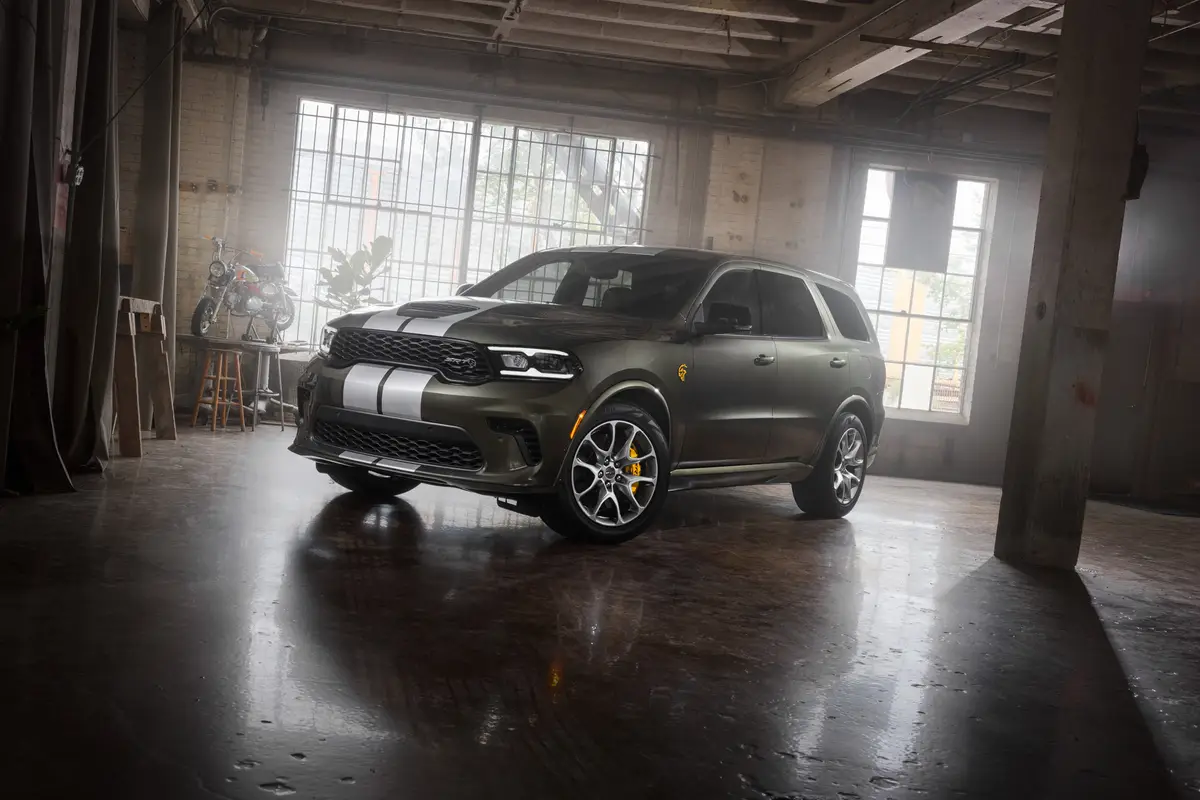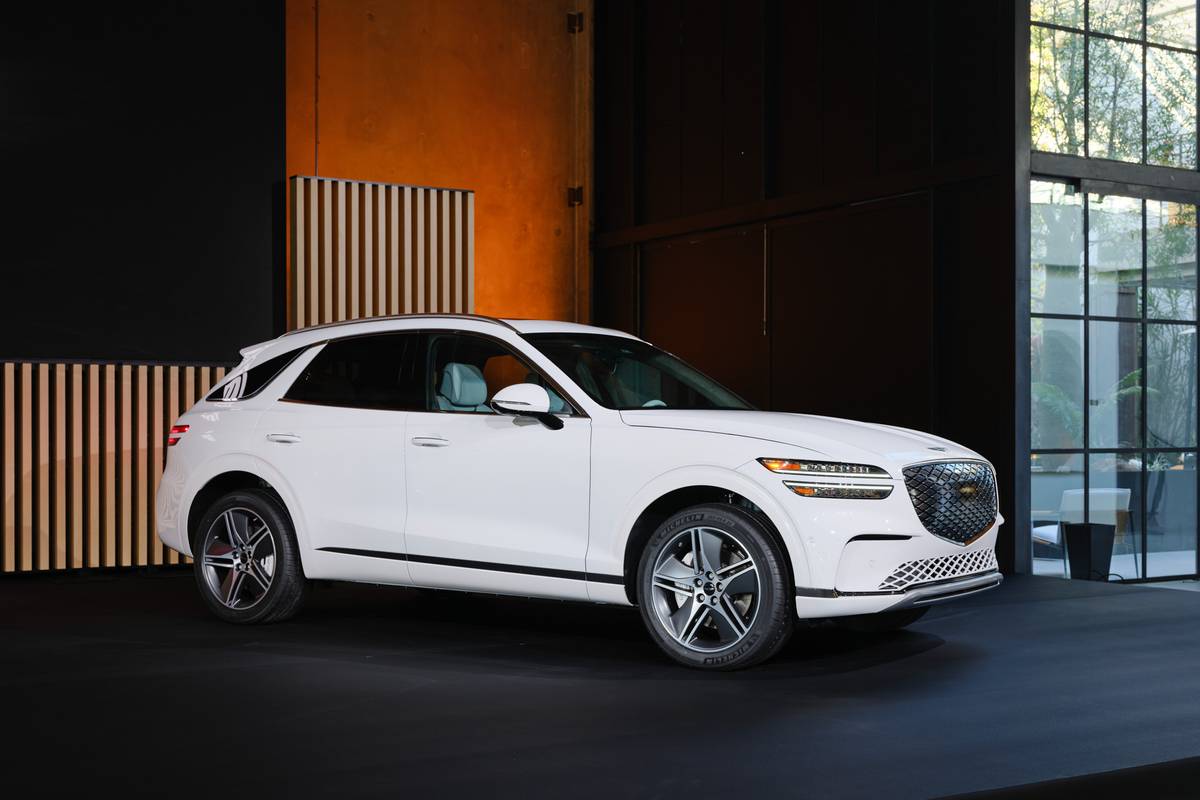Orlando Sentinel's view
As I took a walk around this week’s stylish test car, a white Suzuki Esteem GLX sedan, I noticed its clean lines and smoothly rounded body and thought, ”This is a Suzuki?”
Then I got inside, discovered a loose door panel, a squeak in the steering wheel and a cranky engine, and thought, ”Yep, this is a Suzuki.”
It could just be that I am jinxed when it comes to Suzukis – once I tested a Sidekick whose fuel filler door refused to open.
But it also could be that Suzuki has a way to go to improve its quality.
Our test car, with 3,600 miles on the odometer, went back to the dealer for a few repairs. Then I tested it.
The 1995 Esteem GLX is far and away the nicest-looking automobile Suzuki has ever built. However, at $15,789, one could hardly call it a bargain – not when larger, better built Cavaliers, Saturns, Sentras, Corollas, Escorts and Civics can be had for less with about the same level of equipment.
PERFORMANCE
Suzuki claims the Esteem’s 1.6-liter, 16-valve, four-cylinder engine offers ”a smooth, quiet ride.”
That’s only partially correct.
When you drive the car with a light foot, it runs smoothly and quietly, and the transmission goes about its business largely unnoticed. The problem is that you move at a snail’s pace.
Although the Esteem’s engine is rated at 98 horsepower, you have to keep the accelerator buried deep in the carpet to coax respectable performance from the aluminum engine, which gets loud and buzzy.
When the tachometer needle approaches 5,500 rpm, the engine gets raucous. Maybe Suzuki’s engineers just need to retune the engine so that it delivers more power without having to be revved quite so high.
In fact, the drivetrain feels unrefined compared with other subcompacts I have tested recently. Also, the engine lacked power when cold; I would guess that was because of a fault in the cold start mechanism in the fuel-injection system. When hot, the engine was sometimes hard to start; it didn’t always catch right away when I turned the key.
Making the engine work hard provoked rough shifts from the four-speed automatic transmission in our fully loaded test car. Not only that, but the gearbox was a tad slow to downshift when I needed to accelerate past slower traffic.
Perhaps the Esteem would have performed better with a manual transmission. A stick shift generally works better with a small engine.
Using the air conditioner, the Esteem delivered 25 mpg in the city and 32 mpg on the highway.
HANDLING
The Esteem’s engine and transmission may be unimpressive, but the car’s sporty handling, crisp steering and strong brakes make it a very competent-handling car. I found the Esteem enjoyable to drive in city traffic. Because you can’t go very fast when driving around town, the car’s coarse engine and sluggish performance weren’t usually drawbacks.
The power-assisted rack-and-pinion steering system enabled the car to be eased into tight parking spaces with little effort. You can turn a complete circle in just over 32 feet. The wheel had a nice, weighted feel.
Our test car came with anti-lock brakes, a disc/drum setup that did a good job of slowing the 3,120-pound car. The ABS system was a bit noisy and I felt some pulsating at the pedal. But the system got the job done in emergency stops.
The four-wheel independent suspension system, which consists of MacPherson struts and coil springs, gave the car a firm and stable ride. A stabilizer bar up front helps to keep the body from leaning when you round a curve.
Noise is the one drawback of McPherson struts. When rolling over potholes and large bumps in the Esteem, I could hear the struts (shocks, basically) move up and down. It wasn’t annoying, really, because most of my driving was on good roads.
FIT AND FINISH
Although the Esteem never left me stranded, it ranks as the worst car I have driven this yea .
If I had just spent nearly $16,000 on a car, I would not want to hear a strange creaking noise in the steering column. The dealer failed to fix it.
I also heard a virtual symphony of rattles and squeaks when driving over rough terrain, such as railroad crossings and speed bumps. These things did little to inspire confidence.
However, I like the design of the Esteem. This is an attractive, almost classy looking small car.
It’s comfortable.
It’s roomy.
It’s versatile.
By comparison it makes Toyota’s Tercel look positively dumpy. The Esteem’s dash is particularly attractive, user-friendly and functional. The well-placed air-conditioner vents can be set to direct cold blasts of air straight at your face. The air conditioner, by the way, is excellent. At its lowest setting, it pumped out cold air like a deep freezer.
All Esteems come with bucket seats and a floor shifter. The cloth-covered seats in our test car were firm but supportive and comfortable on longer trips.
Interior room is one area where the Esteem has an advantage over a few other subcompacts. There is plenty of headroom and foot room for average-sized rear-seat passengers. The back seats fold forward and flat, which opens a path to the trunk and allows you to stow larger items, such as water skis, inside the car.
For a small car, the Esteem has a spacious trunk. The lip of the lid extends to the top of the rear bumper, making it easy to load items into the trunk.
Our test car, the top-of-the-line GLX model, came with just about every accessory Suzuki offers, including power windows, door locks and mirrors, cruise control and an AM-FM/cassette radio.
At nearly $16,000, this week’s test car certainly is no bargain. Even if there were no quality problems, the Esteem’s size and performance don’t justify its price.
There are too many better cars – Dodge Neon, Geo Prizm, Saturn SL – that can be had for less.
Truett’s tip: Suzuki’s 1995 Esteem is a great-looking little car, but it is expensive, unrefined and of questionable quality.
Latest news



